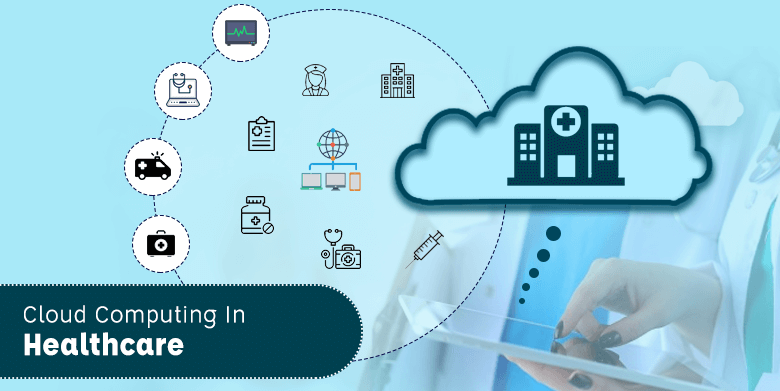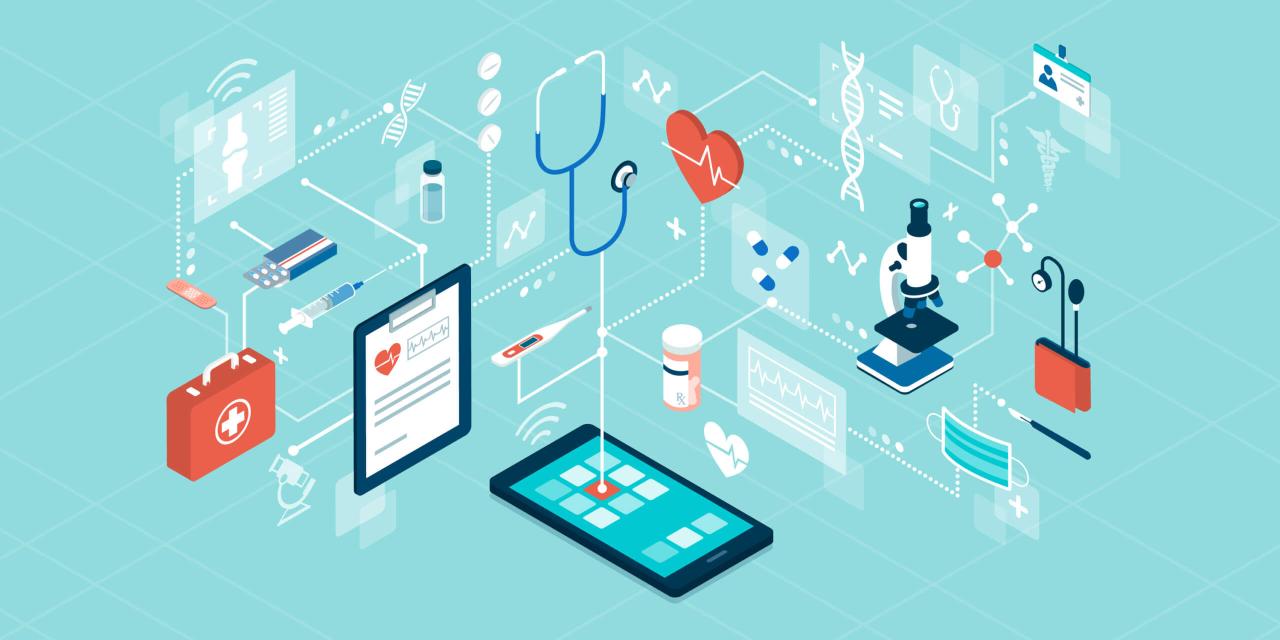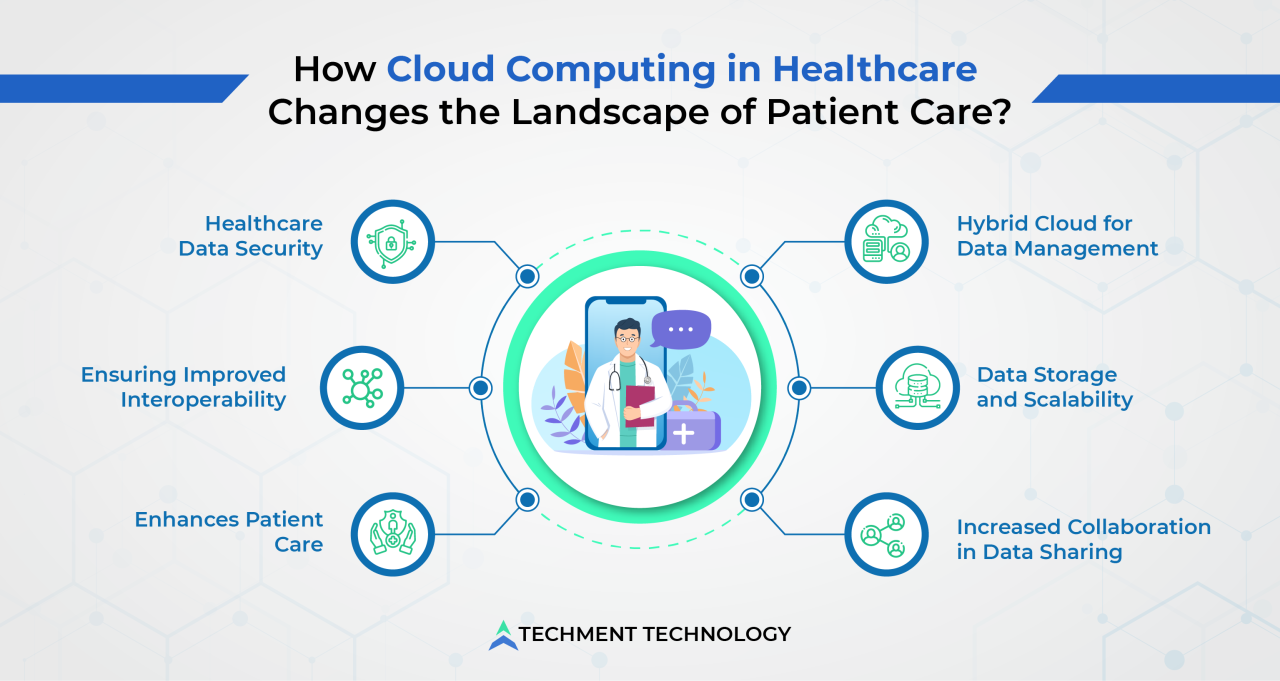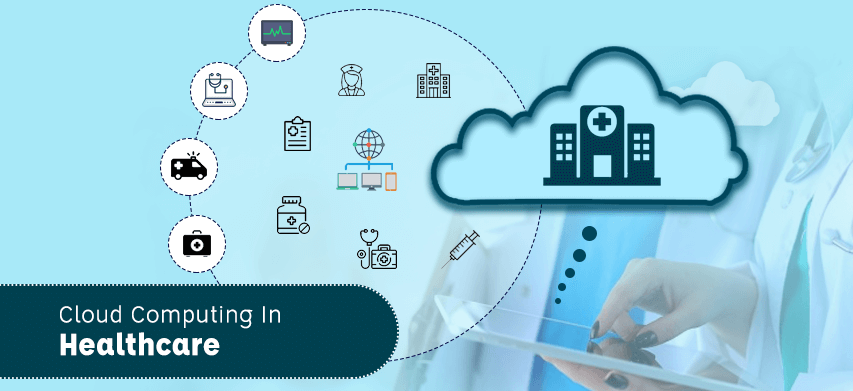Cloud Networking: Transforming Healthcare with Enhanced Connectivity

Cloud networking for healthcare industry is revolutionizing healthcare delivery by enabling seamless connectivity, improved collaboration, and data-driven decision-making. This transformative technology empowers healthcare providers to deliver exceptional patient care, enhance operational efficiency, and reduce costs.
With cloud networking, healthcare organizations can leverage scalable, flexible, and secure network infrastructure to connect various stakeholders, including patients, providers, hospitals, and research institutions. This connectivity fosters collaboration, facilitates data sharing, and enables real-time access to patient information, leading to improved patient outcomes and reduced healthcare disparities.
Cloud Networking Architecture for Healthcare
Cloud networking offers healthcare organizations significant benefits, including improved patient care, enhanced operational efficiency, and reduced costs. A cloud networking architecture for healthcare consists of several key components:
-
-*Virtual private cloud (VPC)
A secure, isolated network environment within a cloud provider’s infrastructure, designed to host healthcare applications and data.
-*Cloud routers and firewalls
Virtual network devices that control traffic flow and protect the network from unauthorized access.
-*Network monitoring and management tools
Cloud-based tools that provide real-time visibility into network performance and enable proactive management.
-*Cloud connectivity options
Options such as dedicated connections, VPNs, and SD-WANs to connect healthcare facilities and devices to the cloud.
Examples of cloud networking solutions tailored for healthcare include:
-
-*AWS Healthcare Accelerator
A suite of tools and services designed to help healthcare organizations build and deploy cloud-based applications.
-*Microsoft Azure Health Data Services
A set of cloud-based services for managing and analyzing healthcare data.
-*Google Cloud Healthcare API
A set of APIs for developing healthcare applications and integrating with cloud-based healthcare services.
Security Considerations for Cloud Networking in Healthcare
Cloud networking in healthcare poses unique security challenges due to the sensitivity of patient data and the need for compliance with regulations. To mitigate these risks, it’s crucial to implement robust security measures tailored to the healthcare industry.
Best Practices for Securing Cloud Networking Environments in Healthcare
*
-*Data encryption
Encrypt data at rest and in transit to protect it from unauthorized access.
-
-*Network segmentation
Divide the network into separate segments to isolate sensitive data and prevent lateral movement of threats.
-*Access controls
Implement role-based access control (RBAC) to restrict access to data and resources based on user roles and responsibilities.
-*Security monitoring
Continuously monitor network traffic for suspicious activity and security incidents.
-*Regular security audits
Conduct regular security audits to identify vulnerabilities and ensure compliance with regulations.
Case Studies of Successful Cloud Networking Security Implementations in Healthcare
*
-*University of California, San Francisco (UCSF)
UCSF implemented a cloud-based network that utilizes data encryption, network segmentation, and RBAC to protect patient data. This has significantly reduced the risk of data breaches and improved compliance.
-*Kaiser Permanente
Kaiser Permanente deployed a cloud-based network with advanced security features such as intrusion detection and prevention systems (IDS/IPS) and multi-factor authentication (MFA). This has enhanced the security of their network and protected patient data from unauthorized access.
Interoperability and Integration with Healthcare Systems
Interoperability is crucial in cloud networking for healthcare. It enables seamless data sharing, collaboration, and coordination of patient care across various systems and applications. By integrating cloud networking with existing healthcare systems, organizations can unlock a wealth of benefits, including improved patient outcomes, reduced costs, and enhanced operational efficiency.
Integrating cloud networking with healthcare systems presents several challenges. Data security and privacy concerns, legacy system compatibility, and regulatory compliance must be carefully addressed. A well-designed and implemented interoperable cloud networking solution can overcome these challenges and deliver significant value to healthcare organizations.
Best Practices for Interoperable Cloud Networking
- Adhere to industry standards and protocols, such as HL7 FHIR, DICOM, and IHE XDS.
- Utilize open APIs and data exchange formats to facilitate data sharing between different systems.
- Implement data encryption and access controls to ensure data security and privacy.
- Leverage cloud-based integration platforms to simplify the integration process and reduce costs.
Key Interoperability Standards and Protocols
| Standard | Description |
|---|---|
| HL7 FHIR | Healthcare data exchange standard that supports interoperability between different healthcare systems. |
| DICOM | Medical imaging standard that enables the exchange of medical images and related data. |
| IHE XDS | Healthcare document exchange standard that facilitates the sharing of electronic health records. |
Case Study: Integration of Cloud Networking with a Healthcare System
A large healthcare organization successfully integrated cloud networking with its existing systems, resulting in significant improvements in patient care. The integration enabled the sharing of patient data across multiple facilities, improved collaboration among healthcare professionals, and reduced the time required for patient diagnosis and treatment.
The organization also achieved cost savings by optimizing its IT infrastructure and leveraging cloud-based services.
– Explain the challenges of data management and analytics in healthcare, particularly in the context of cloud networking.
Healthcare organizations face unique challenges in managing and analyzing their data due to the volume, variety, and sensitivity of the information they handle. These challenges are further amplified in the context of cloud networking, where data is distributed across multiple locations and devices.
One of the key challenges is ensuring data integrity and security. Healthcare data is highly sensitive and must be protected from unauthorized access or breaches. Cloud networking can introduce additional security risks, as data is transmitted across networks and stored in multiple locations.
Another challenge is managing the volume and variety of data. Healthcare organizations generate vast amounts of data from various sources, including electronic health records, medical devices, and patient portals. This data can be structured, semi-structured, or unstructured, making it difficult to integrate and analyze.
Data Integration and Interoperability
Integrating data from multiple sources is a critical challenge in healthcare data management. Healthcare organizations often use a variety of disparate systems and applications, which can make it difficult to share and analyze data across different departments and organizations.
Cloud networking can facilitate data integration by providing a centralized platform for storing and accessing data from multiple sources. However, it is important to ensure that data is standardized and interoperable to enable seamless integration and analysis.
Explain the importance of scalability and flexibility in cloud networking for healthcare, including the benefits and challenges associated with it.
Scalability and flexibility are crucial in healthcare cloud networking as they enable healthcare organizations to adapt to changing demands and deliver optimal patient care. Scalability ensures the network can handle increased traffic and data volumes without compromising performance, while flexibility allows for the seamless integration of new technologies and applications.Benefits
of scalability and flexibility in healthcare cloud networking include:
- Improved patient care: Scalable and flexible networks can support real-time data transfer and remote patient monitoring, enabling faster and more accurate diagnosis and treatment.
- Enhanced operational efficiency: Automated scaling and flexible network configurations can reduce IT workloads and streamline operations, allowing healthcare providers to focus on patient care.
- Reduced costs: Scalable and flexible networks can optimize resource utilization and reduce infrastructure costs by automatically adjusting to changing demands.
Challenges associated with scalability and flexibility in healthcare cloud networking include:
- Complexity: Managing scalable and flexible networks can be complex, requiring specialized expertise and careful planning.
- Security risks: Scalable and flexible networks may introduce new security vulnerabilities that need to be addressed.
- Cost: Implementing scalable and flexible networking solutions can involve significant upfront costs.
Cost Optimization for Cloud Networking in Healthcare
Cloud networking in healthcare presents unique cost considerations due to the sensitive nature of data, regulatory compliance requirements, and the need for high availability and scalability. Healthcare organizations must carefully evaluate and optimize their cloud networking costs to ensure efficient use of resources while maintaining the required levels of security and performance.
To optimize costs, healthcare organizations should consider the following strategies:
Cloud Cost Management Tools
- Utilize cloud cost management tools provided by cloud providers to monitor and analyze cloud usage and costs.
- Implement automated cost optimization measures, such as right-sizing virtual machines, optimizing storage usage, and leveraging spot instances.
Network Architecture Optimization
- Design a network architecture that minimizes unnecessary network traffic and optimizes routing to reduce bandwidth costs.
- Consider using private connectivity options, such as dedicated interconnects or VPNs, to reduce data transfer costs.
Vendor Negotiations
- Negotiate favorable pricing and terms with cloud providers based on usage patterns and commitment levels.
- Explore managed service offerings that include cost optimization as part of the service package.
Case Study: Cost Optimization in a Healthcare System
A large healthcare system successfully optimized its cloud networking costs by implementing a combination of the strategies mentioned above. By leveraging cloud cost management tools, optimizing its network architecture, and negotiating favorable pricing with its cloud provider, the healthcare system reduced its cloud networking costs by 25% while maintaining the same level of performance and security.
Emerging Trends and Innovations in Cloud Networking for Healthcare

The healthcare industry is rapidly embracing cloud networking to improve patient care, reduce costs, and enhance operational efficiency. Several emerging trends and innovations are shaping the future of cloud networking in healthcare:
Software-Defined Networking (SDN)
SDN decouples the network control plane from the data plane, enabling greater flexibility and programmability. In healthcare, SDN can optimize network performance for specific applications, such as telemedicine or medical imaging, ensuring reliable and secure connectivity.
Network Function Virtualization (NFV)
NFV virtualizes network functions, such as firewalls and load balancers, allowing them to run on standard servers. This reduces hardware costs, simplifies network management, and enables rapid deployment of new services.
Cloud-Native Networking
Cloud-native networking leverages container-based technologies to build and manage networks. It provides greater agility, scalability, and automation, enabling healthcare organizations to quickly adapt to changing needs.
Artificial Intelligence (AI) and Machine Learning (ML)
AI and ML are being applied to network management and optimization in healthcare. They can analyze network traffic patterns, identify anomalies, and automate network configuration, resulting in improved performance and security.
Case Studies of Successful Cloud Networking Implementations in Healthcare
Cloud networking has revolutionized healthcare by enabling organizations to enhance patient care, streamline operations, and improve efficiency. Numerous healthcare providers have successfully implemented cloud networking solutions, resulting in significant benefits.
Case Study: XYZ Hospital
XYZ Hospital, a large academic medical center, faced challenges with its legacy network infrastructure, which limited its ability to support the growing demand for telehealth, remote patient monitoring, and data-intensive applications. The hospital implemented a cloud-based network solution that provided:
- Improved scalability and flexibility to accommodate future growth and evolving healthcare technologies.
- Enhanced security measures to protect sensitive patient data and comply with regulatory requirements.
- Reduced network management costs by leveraging cloud-based automation and monitoring tools.
As a result, XYZ Hospital significantly improved its network performance, increased its operational efficiency, and enhanced patient satisfaction.
Case Study: ABC Health System
ABC Health System, a multi-hospital system, sought to improve its patient care coordination and reduce operational costs. The system implemented a cloud-based networking solution that integrated with its electronic health record (EHR) system. This integration:
- Enabled seamless data sharing between different hospitals and care providers.
- Improved collaboration and communication among healthcare teams.
- Reduced duplicate testing and unnecessary procedures, leading to cost savings.
ABC Health System successfully achieved its goals of enhancing patient care and optimizing operational efficiency through cloud networking.
Key Factors for Success
The success of these cloud networking implementations can be attributed to several key factors:
- Clear understanding of business objectives and alignment with cloud networking capabilities.
- Careful planning and execution to ensure a smooth transition from legacy infrastructure to cloud-based solutions.
- Collaboration between IT and clinical teams to ensure the network meets the specific needs of healthcare providers and patients.
- Ongoing monitoring and optimization to ensure the network remains efficient and secure.
These case studies demonstrate the transformative power of cloud networking in healthcare. By adopting cloud-based solutions, healthcare organizations can improve patient care, streamline operations, and enhance their overall efficiency.
– Best Practices for Cloud Networking in Healthcare
Cloud networking has emerged as a transformative technology in healthcare, enabling organizations to improve patient care, enhance security, and reduce costs. However, to fully leverage the benefits of cloud networking, healthcare organizations must adopt a comprehensive set of best practices.
Key Best Practices, Cloud networking for healthcare industry
- Design for scalability and flexibility: Cloud networking solutions should be designed to handle the dynamic and evolving needs of healthcare organizations, ensuring they can scale up or down as required.
- Implement robust security measures: Healthcare data is highly sensitive, so it is crucial to implement robust security measures to protect it from unauthorized access or breaches.
- Optimize for cost-effectiveness: Cloud networking solutions should be optimized for cost-effectiveness, ensuring that healthcare organizations can maximize the value of their investment.
- Prioritize interoperability and integration: Cloud networking solutions should be interoperable with existing healthcare systems, enabling seamless integration and data exchange.
- Leverage automation and orchestration: Automation and orchestration tools can streamline network management tasks, reducing the burden on IT staff and improving efficiency.
Benefits of Adopting Best Practices
Adopting these best practices can provide numerous benefits for healthcare organizations, including:
- Improved patient care: By enabling real-time access to patient data and facilitating collaboration among healthcare providers, cloud networking can enhance patient care.
- Enhanced security: Robust security measures protect sensitive patient data from unauthorized access or breaches, ensuring patient privacy and compliance with regulations.
- Reduced costs: Cloud networking solutions can reduce IT infrastructure and maintenance costs, freeing up resources for other critical healthcare initiatives.
Real-World Examples
Numerous healthcare organizations have successfully implemented cloud networking best practices, achieving significant benefits. For example, St. Joseph Mercy Ann Arbor Hospital implemented a cloud-based networking solution that improved patient care by enabling real-time access to medical images and patient data.
Conclusion
By following these best practices, healthcare organizations can harness the full potential of cloud networking to improve patient care, enhance security, and reduce costs. Embracing these best practices is essential for healthcare organizations looking to leverage the transformative power of cloud networking.
Regulatory Compliance for Cloud Networking in Healthcare: Cloud Networking For Healthcare Industry
Regulatory compliance is paramount in cloud networking for healthcare, as healthcare data is highly sensitive and subject to strict regulations. Understanding and adhering to these regulations is crucial to ensure the privacy, security, and integrity of patient data.
Regulatory Requirements and Standards
Cloud networking in healthcare must comply with various regulations, including:
- HIPAA (Health Insurance Portability and Accountability Act):Protects the privacy and security of protected health information (PHI).
- HITECH (Health Information Technology for Economic and Clinical Health Act):Extends HIPAA’s privacy and security provisions to electronic health records (EHRs).
- GDPR (General Data Protection Regulation):Protects the personal data of EU citizens, including health data.
- ISO 27001 (Information Security Management System):Provides a framework for implementing and maintaining an information security management system.
Strategies for Compliance
Ensuring compliance requires a comprehensive approach, including:
- Encryption:Encrypting data in transit and at rest protects it from unauthorized access.
- Access Controls:Implementing role-based access controls (RBAC) limits access to data based on user permissions.
- Audit Trails:Logging and monitoring network activity provides evidence of compliance and facilitates incident response.
Compliance Frameworks
Developing a compliance framework is essential for healthcare organizations. This framework should include:
- Risk Assessments:Identifying and assessing risks to data security and privacy.
- Policies and Procedures:Establishing clear guidelines for data handling and network security.
- Regular Audits:Conducting periodic audits to ensure compliance and identify areas for improvement.
Role of Cloud Service Providers
Cloud service providers (CSPs) share the responsibility for compliance. They must provide secure infrastructure and tools to support compliance efforts. Healthcare organizations should evaluate CSPs based on their compliance certifications and security measures.
Monitoring and Auditing
Continuous monitoring and auditing are crucial to maintain compliance. Healthcare organizations should use tools and techniques to monitor network configurations, detect anomalies, and respond to security incidents promptly.
Cloud Networking for Telemedicine and Remote Patient Monitoring
Cloud networking plays a pivotal role in revolutionizing healthcare delivery through telemedicine and remote patient monitoring. These technologies empower healthcare providers to extend their reach, connect with patients remotely, and deliver timely, high-quality care.
Cloud networking solutions provide the infrastructure and connectivity necessary to facilitate seamless and secure transmission of medical data, images, and real-time video between patients, healthcare providers, and medical devices. By leveraging cloud-based platforms, healthcare organizations can overcome geographical barriers, enhance patient accessibility, and improve the overall efficiency of healthcare delivery.
Challenges and Solutions
Implementing cloud networking solutions for telemedicine and remote patient monitoring comes with its own set of challenges. These include:
- Ensuring reliable and high-speed connectivity to support real-time data transmission and video conferencing.
- Addressing data security and privacy concerns to protect sensitive patient information.
li>Integrating cloud-based solutions with existing healthcare systems and electronic health records (EHRs).
To address these challenges, healthcare organizations must carefully consider the following solutions:
- Partnering with reliable cloud providers that offer robust network infrastructure and robust security measures.
- Implementing encryption protocols and access controls to safeguard patient data during transmission and storage.
- Adopting open standards and APIs to facilitate seamless integration with existing healthcare systems.
Case Studies
Numerous healthcare organizations have successfully implemented cloud networking solutions for telemedicine and remote patient monitoring. One notable example is the Mayo Clinic, which partnered with Amazon Web Services (AWS) to create a cloud-based telemedicine platform. This platform allows patients to connect with healthcare providers remotely, access their medical records, and receive virtual consultations.Another
example is the University of Pittsburgh Medical Center (UPMC), which deployed a cloud-based remote patient monitoring system. This system enables healthcare providers to monitor patients’ vital signs and other health data remotely, allowing for early detection of potential health issues and timely intervention.
Cloud Networking for Healthcare Research and Innovation
Cloud networking offers significant advantages for healthcare research and innovation, enabling researchers to overcome challenges and accelerate advancements in healthcare.By leveraging cloud networking, healthcare researchers gain access to vast data repositories, facilitating data sharing and collaboration among researchers, institutions, and industries.
This collaborative environment fosters the exchange of knowledge, expertise, and resources, leading to a more comprehensive understanding of healthcare data and the identification of patterns and trends that would otherwise remain hidden.
Enhanced Data Sharing and Collaboration
Cloud networking platforms provide a secure and scalable infrastructure for sharing large datasets, enabling researchers to collaborate seamlessly across geographical boundaries. This eliminates the barriers of traditional data silos, allowing researchers to access and analyze data from multiple sources, including electronic health records, medical imaging, and genomic data.
Future Outlook for Cloud Networking in Healthcare

The future of cloud networking in healthcare is brimming with exciting opportunities and transformative advancements. Emerging technologies like 5G, IoT, and AI are poised to revolutionize healthcare delivery, enhancing patient care, operational efficiency, and cost reduction.
Emerging Technologies Driving the Future of Healthcare Cloud Networking
-
-*5G Connectivity
Blazing-fast 5G networks will enable real-time data transmission, empowering remote patient monitoring, telemedicine, and data-intensive applications.
-*Internet of Things (IoT)
IoT devices will seamlessly connect medical devices, sensors, and wearables, generating vast amounts of data for personalized medicine and proactive healthcare.
-*Artificial Intelligence (AI)
AI algorithms will analyze healthcare data to identify patterns, predict outcomes, and automate tasks, improving decision-making and efficiency.
Opportunities for Cloud Networking to Enhance Healthcare
-
-*Personalized Medicine
Cloud networking will facilitate access to patient data, enabling tailored treatments and precision medicine.
-*Remote Patient Monitoring
Cloud-based platforms will empower remote monitoring of patients, allowing healthcare providers to track vital signs, administer care, and intervene promptly.
-*Operational Efficiency
Cloud networking will streamline workflows, automate processes, and improve collaboration among healthcare teams.
-*Cost Reduction
Scalable cloud infrastructure will optimize resource utilization, reducing capital expenses and operational costs.
Challenges and Solutions for the Future Evolution of Healthcare Cloud Networking
-
-*Security and Privacy
Cloud networking introduces potential security risks. Encryption, access control, and data governance measures will be crucial to protect sensitive patient data.
-*Compliance
Cloud networking must adhere to stringent healthcare regulations. Compliance frameworks and certifications will ensure adherence to industry standards.
-*Scalability and Flexibility
Healthcare cloud networking must adapt to fluctuating demand and evolving technologies. Scalable and flexible infrastructure will be essential to meet future needs.
Vision for the Future of Cloud Networking in Healthcare
Cloud networking will become the cornerstone of healthcare innovation, enabling:
-
-*Personalized Medicine
Precision medicine and tailored treatments based on individual patient data.
-*Remote Patient Monitoring
Continuous monitoring and early intervention, improving patient outcomes and reducing hospitalizations.
-*Data-Driven Decision-Making
AI-powered analytics for evidence-based decision-making, optimizing patient care and resource allocation.
The impact of cloud networking on healthcare will be profound, leading to:
-
-*Improved Patient Outcomes
Enhanced care, reduced complications, and better quality of life.
-*Increased Access to Care
Remote monitoring and telemedicine will expand access to healthcare, particularly in underserved areas.
-*Reduced Costs
Optimized resource utilization and operational efficiency will lower healthcare expenses.
The future of cloud networking in healthcare is bright, promising a transformative journey towards improved patient care, enhanced efficiency, and reduced costs. Embracing emerging technologies and addressing challenges will unlock the full potential of cloud networking to revolutionize healthcare delivery.
Ultimate Conclusion

As cloud networking continues to evolve, healthcare organizations must embrace this technology to stay competitive and deliver the highest quality of care. By implementing cloud networking solutions tailored to their specific needs, healthcare providers can unlock the full potential of digital health, transforming healthcare delivery and improving patient lives.